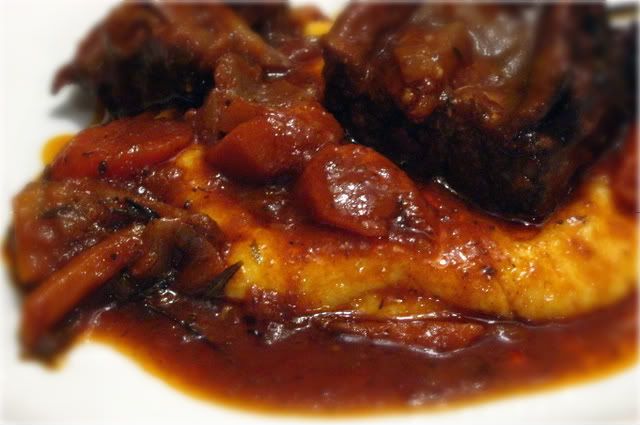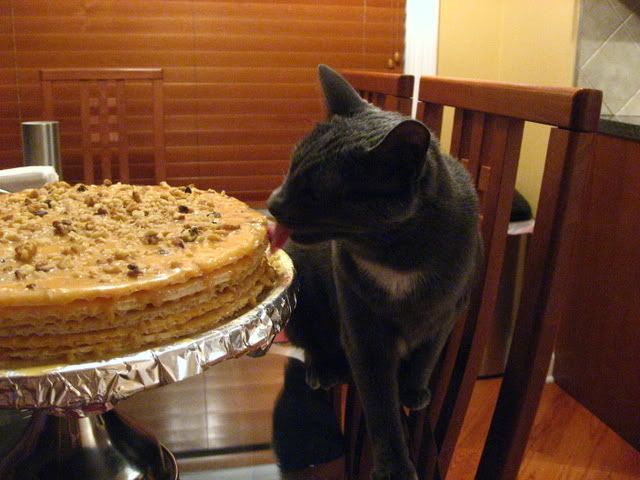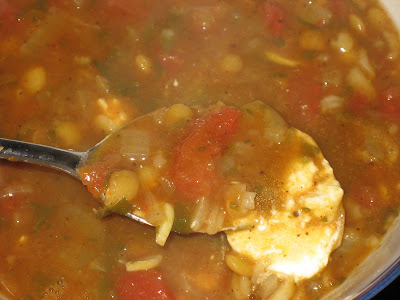
Every once in awhile, a dish comes along that is just perfect. In fact, it would be disrespectful to the generations before to change it. France has duck confit, Italy has risotto, the US has BBQ and Uzbekistan has "plov". Whether you call it, pilaf, polow, pulao, the basic idea remains the same, a simple rice dish with complex flavors and old tradition.
Plov is actually the Russian pronounciation of the word common to all of the Caucas, Turkmenia, Kazakhstan, Uzbekistan, Iran, Afghanistan and India. "Plov" seems to be first seen in Samarkand when Alexander the Great of Macedonia asked his cooks to create a dish that could be used for him to entertain "company". "Plov" recipes were handed down not from parent to child but instead from merchant to merchant, from traveler to traveler on the Great Silk Road. Although several changes were made due to local available ingredients and tastes, it has remained in some shape or form as a popular dish among all eastern cultures from China to Azerbaijan.
Today "plov" is known as the most popular and common dish to Uzbekistan. Natives of this country claim that there are more than 50 varities of this dish. It is used when a friend comes over, as the main dish at a wedding and even funerals. Some use different meats, nuts, dried fruits, spice etc, but the technique remains the same. However, the classical "plov" recipe remains the same for over 1000 years. There are certain traditions that must remain the same when cooking a classic "plov".
1. You have to use a heavy bottomed pot which they call a "kazan" to cook the "plov". Cast-iron works the best. "Plov" cooks on a very high temperature, therefore you need a something that is going to be a good insulator of heat and cast iron proves to be one of the best.
2. Rice must be washed throughly and preferably steeped in water before adding it to the "kazan".
3. Plenty of carrots must be used. In fact, they even state that the carrots to use are light orange in color not the deep orange-red that I have here. *Unfortunately, that's all I could find and my "plov" still tastes amazing, so I would not worry too much about it.*

4.The rice is VERY important. The combination of the rice and the cooking method are what give "plov" its distinct quality. The rice seperates perfectly from one grain to the next and NEVER clumps! Clumping is pretty much the tell tale sign that the "plov" was a failure. There is a certain rice that is used native to the area. The closest that I found was "
Enriched Parboiled Long Grain Rice". It is easy to find and works best for this dish.

5. Lastly, only a man cooks the "plov". This is the one rule that I must break. I believe traditionally it was because the "kazans" were so heavy that only men would be able to work with them or prehaps it was a very sexist society. Either way, I break this rule.

One thing I must mention, this is not a dish that I recommend making on a whim. It is time intensive and a bit labor intensive. It requires a LOT of carrots cut into matchsticks by hand. For this reason, I prepare everything the night before and all my cutting is done for me once I am ready to cook. I am always excited to cook this dish, ALWAYS. It is one of those dishes that for me is very therapeutic. It does take some time, but the end result is something that you will be proud of. As simple as it is, the end product will reflect the hard work and time you put into the dish and I promise people will be impressed.
I will also admit that I learned the actual recipe very recently. About 3 months ago to be exact. I had attempted making this dish many times, cooking it the way a culinary graduate would, in accordance to French culinary laws. However, this could not have been farther away from the actual recipe and technique. I used brown basmati rice to make it healthier, which we know now is not right. I cooked it for only an hour instead of the necessary 3. My best friend, Marina, would always say to me,
"My mother-in-law says that it takes all day to prepare this dish."
To that I would respond with,
"Oh that's because she is slow, my culinary skills and techniques allow me to do it in less than half the time."
Well I was wrong! My rice was never the way it should be. When I read about the way the rice should fall from one grain to the next , I knew I was in the wrong.
It wasn't until one night when I was at my friend Kate's house that I saw exactly what I needed to do. She explained the whole process to me as was told to her by an Uzbek (and Uzbekistan native). Wow! It opened my eyes to a whole new method. Completely different than any I have ever seen, but it worked perfectly.
And so I pass this on to you folks, who will hopefully take the time to cook this dish and taste why it has withstood 1000's of years and remained unchanged.
Plov 3 pounds beef stew meat, cut into bite-size pieces
*Traditionally lamb or mutton was used, however I really dislike lamb, so I use beef.*2 large onions, thinly sliced
8-10 large carrots, cut into matchsticks
3 cups of Enriched Parboiled Long Grain Rice, steeped in water
3-4 heads of garlic, with tops cut off
1 tablespoon of cumin
1 teaspoon of black peppercorns
salt to taste
vegetable oil for frying
*I usually use olive oil for general cooking. However, for this, you need the oil to have a high smoke point (the point that it burns) and olive oil has a fairly low one. Vegetable oil has a high one, so you can get the pan screaming hot before your oil begins to burn.*1. In a cast-iron pot, pour in about 1/2 an inch of oil, be generous with it. Turn up the heat all the way. When you see your pan smoking, add your meat.
*Do not over crowd your pot. If you happen to do so and you accumulate a large amount of liquid from the meat, pour out the liquid and reserve it for later, when you add water to the carrots. This way your meat will be able to brown nicely.*
2. Once your beef has browned on all sides, about 10 minutes, add in your sliced onions.

3.Saute' for 15 minutes, until the onions are nicely browned.

4. At this point add in your matchstick carrots and saute for about 15 minutes.
*Here I have demonstrated how to properly and quickly cut your carrots.*
5. Now add in your garlic and nestle it into the mixture. Just cut off the tops and take some of the loose "paper" off the garlic.

Take BOILING water and add it to your garlic, carrots, meat and onions. Only add enough water to just cover the mixture. Add in your herbs and spices, taste the liquid and ensure that there is enough salt and spice in there to compensate for the rice you will be putting in later. NOW you may turn your heat down to low.
*You want to use boiling water because otherwise you would stop the cooking time. At this time, if you can also add any leftover liquid from the meat.*
GO AWAY. PLEASE PLEASE Please whatever you do DO NOT STIR! You will disrupt the wonderful magic that is about to happen! Go talk on the phone, watch half a movie, drink some wine...whatever you want...just do not touch this for 45 minutes.
6.Once this time has passed crank up the heat. Remember that rice you had steeping in the water? Now is the time to drain it and prepare for its final resting place. Once drained, lay the rice CAREFULLY over your carrot, meat and onion mixture. Pretend you are gently "blanketing" the mixture with your rice. Again, take BOILING water and SLOWLY cover the rice just about 1/2 of an inch above the rice. See all that beautiful brown goodness come up to the top? That's your flavor right there, that's what you did all that work for. Now just get the rice done and you will have a complete success.

Let the rice cook on HIGH heat until there is no more liquid. If you see liquid still bubbling up from the top, it isn't done. If you see liquid bubbling up at the bottom, it isn't done. Only when it is completely dry is it done.
Once it is completely dry, turn off the heat and cover with the lid for about 30-60 minutes. Only after this time passes can you mix the mixture. Serve with garlic cloves on top.
And there you have it!

































































